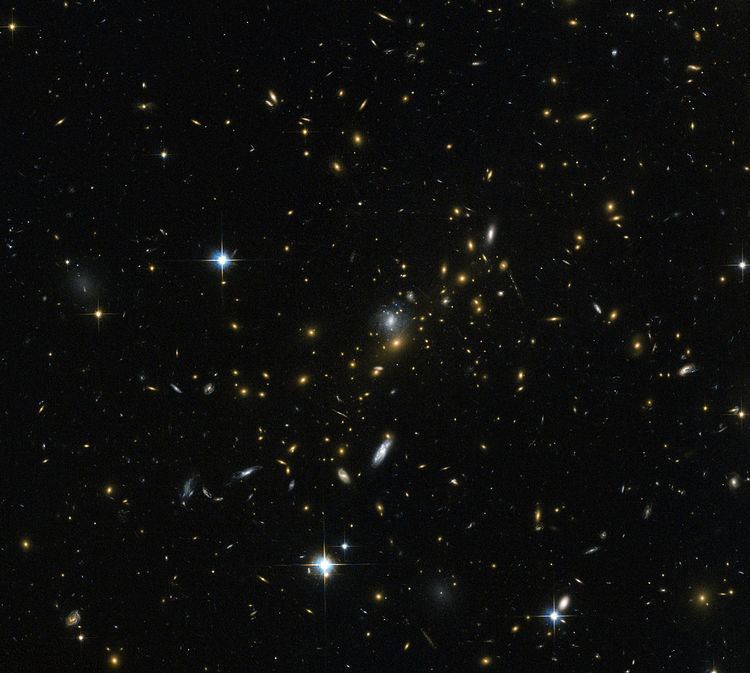 | ||
This is a list of the largest cosmic structures so far discovered. The unit of measurement used is the light year (distance traveled by light in one Julian year; approximately 9.46 trillion kilometres).
This list includes superclusters, galaxy filaments and large quasar groups (LQG's). The list characterizes each structure based on its longest dimension.
Note that this list refers only to coupling of matter with defined limits, and not the coupling of matter in general (as per example the cosmic microwave background, which fills the entire universe). All structures in this list are defined as to whether their presiding limits have been identified.
There are some speculations about this list:
List of largest voids
Voids are immense spaces between galaxy filaments and other large-scale structures. Technically they are not structures. They are vast spaces which contain very few, or no galaxies. They are theorized to be caused by quantum fluctuations during the early formation of the universe.
A list of the largest voids so far discovered is below. Each is ranked according to its longest dimension.
